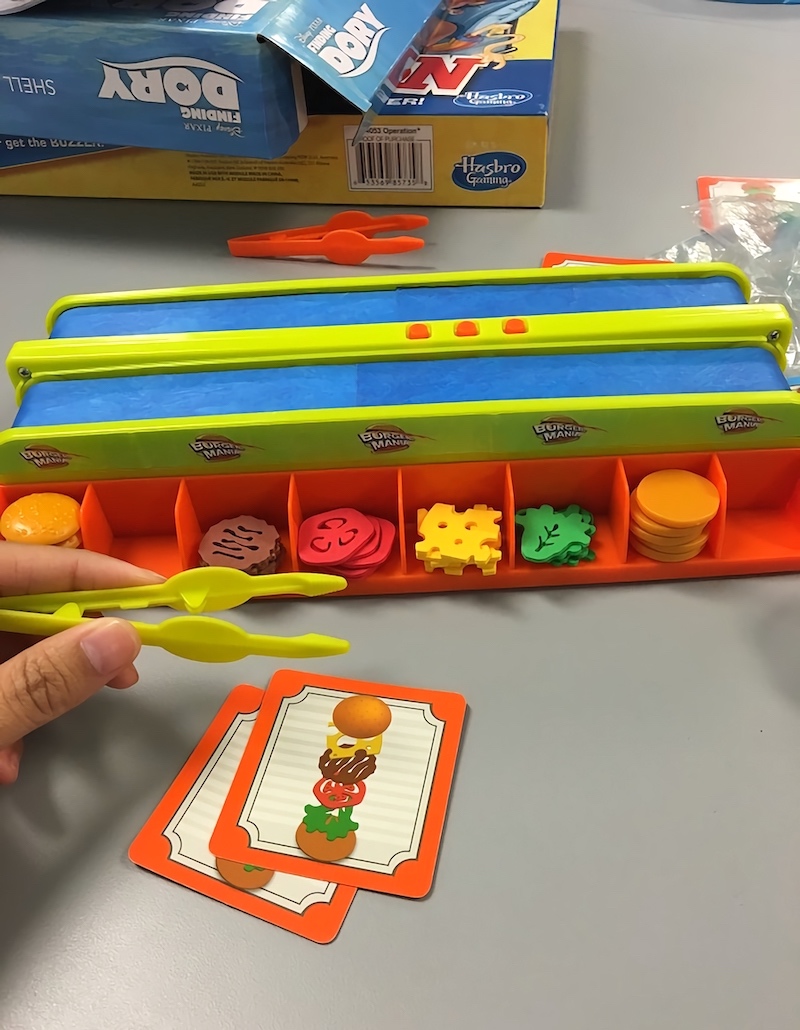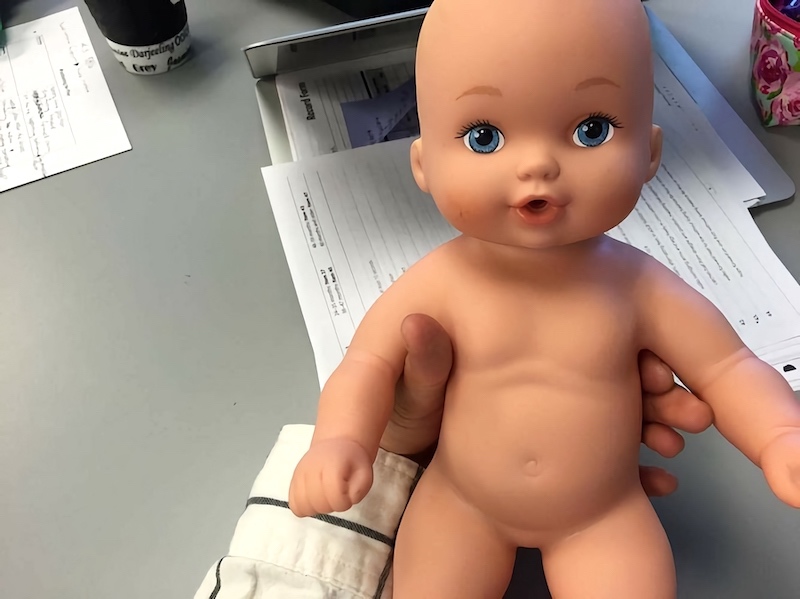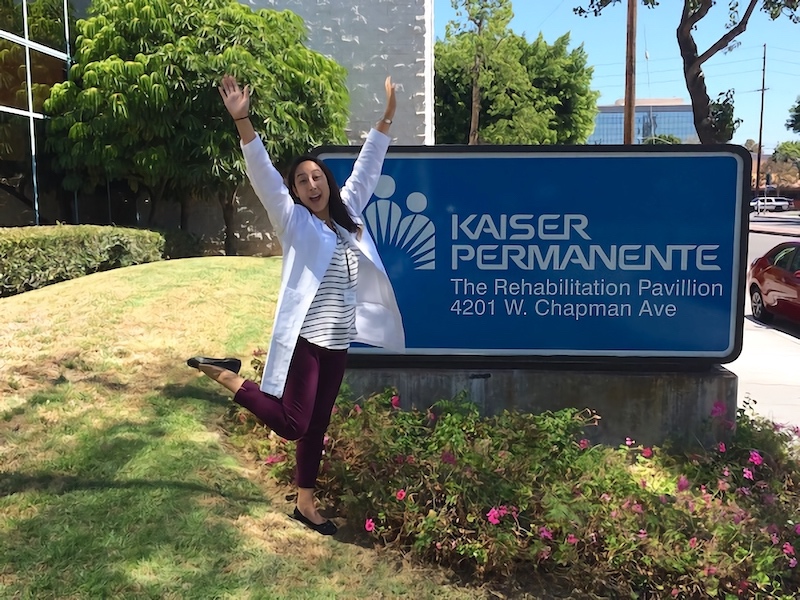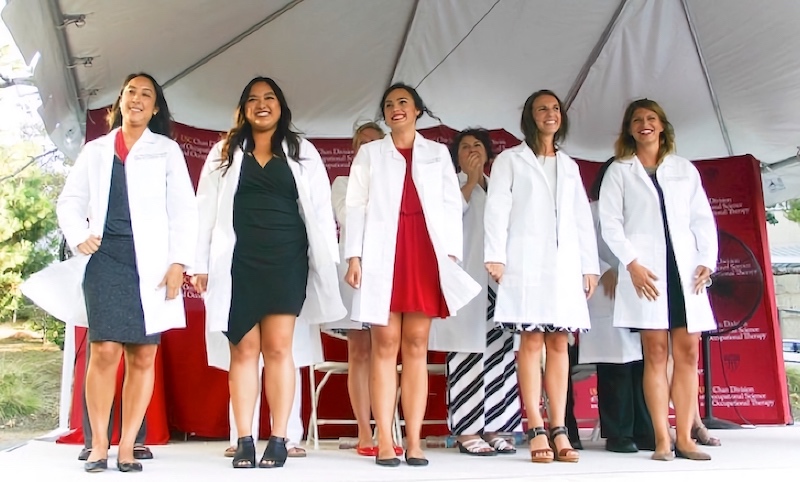Student Blog
Jessica

All fun and games ⟩
September 26, 2016, by Jessica
What I love most about pediatrics is that we often use play, a child’s main occupation, as a means and ends to help a child meet their developmental milestones. And really, who doesn’t love to play?
This past week in pediatrics lab we focus on fine motor coordination assessments and fine motor activities, which included getting to play with a ton of games that can be used to address fine motor coordination skills. Here are some photos of a couple games we played in lab and what they could be used for in practice.

Mr. Mouth game
Mr. Mouth is a game where the goal is to catapult as many flies into the frog’s mouth as possible, while the frog’s mouth is rotating in a circle. There was actually a pretty steep learning curve to this game — it took many missed attempts to figure out that you needed to use less force to get the fly into the frog’s mouth. It can be used to help a child work on isolated finger movement or grading force, which are both important pre-writing skills!

Burger Mania game
Burger Mania is a game where you compete against another person to create a mini burger on the mini conveyor belt before it falls off. You pick a card, and it tells you the type of burger you need to make. The conveyor belt continuously moves, and you have to use these tiny tongs to grab each burger component one at a time to place on the burger in the correct order. This game can be used to work on a child’s ability to use tools, which is also another important pre-writing skill. This game was actually pretty challenging, given the time and speed components. It would be important to keep in mind a child’s frustration tolerance when planning to use this game in therapy.
Overall, pediatrics has definitely helped me with my activity analysis skills. Now whenever I see board games and toys for kids, I can’t help but think about how it can be incorporated into OT practice. Stay tuned for more fine motor goodness in next week’s post!
⋯

Babies! ⟩
September 12, 2016, by Jessica
Coming into OT school, I was pretty sure I wanted to do pediatrics. I’ve worked with kids in almost all of the jobs I’ve had, in different capacities. So I was super excited for this semester, when it was finally my cohort’s turn to take the pediatric immersion course. Throughout this semester I’ll likely be blogging about all the fun stuff I’m learning in pediatrics — today is focused on positioning babies!
What’s awesome about the labs is that our professors have brought in real children into the lab space in order for us to see how to deliver assessments and how typically developing children interact and play. This past week, our lab focused on assessments for early intervention and how to position infants in order to facilitate proper development for play. Before the real babies came in, we were given doll babies to practice positioning them in different positions (supine, prone, sitting, standing, side-lying, crawling, carrying, etc.). Once the real babies came in, it was game over. All attention went to the adorable little ones, an 8 month old and a 4 month old. We even got a chance to hold and play with them, which was definitely the highlight of my week. Before this class, I didn’t realize how different positions can impact the development of babies’ muscles and bones, and ultimately their ability to meet their developmental milestones. I also didn’t realize how much growth babies go through in their first year, and the nuanced differences between infants just a few months apart. OTs have such a pivotal role in educating caregivers on how to hold and position their babies to facilitate healthy development. Having only experienced working with older children (ages 8+), I’m excited to learn more about opportunities to work in early intervention and how to create collaborative relationships with families.
Since I couldn’t take a picture of the cute real babies, here’s a picture of the slightly creepy doll baby we used to practice.

Doll baby used to practice proper positioning in pediatrics lab
⋯

What is fieldwork? ⟩
August 30, 2016, by Jessica
A lot of prospective students have questions about fieldwork, so I thought I’d address that in this post!
A great thing about being an OT student is not just learning new concepts and interventions in class, but actually putting the knowledge into practice. That’s where fieldwork comes into play! As an OT student, you will be participating in two types of fieldwork: Level I and Level II. Level I fieldwork provides exposure into specific practice area, where depending on the setting, you may mostly observe OT practice in that area, or you may get to be more hands on with clients. At USC specifically, you get three Level I experiences, one in each of our major practice areas: adult rehab, mental health, and pediatrics. You’ll have each Level I fieldwork experience coincide with the practice area you are studying for that semester. So for example, since I’m currently in the Pediatrics practice area immersion, I will doing my Level I fieldwork in pediatrics this semester. Each Level I fieldwork experience occurs 1 day per week for 10 weeks, with one week of full-time fieldwork in the middle of the semester.
Level II fieldwork, on the other hand, much more hands-on, as the end goal is to become a competent entry-level therapist. At USC, you’ll have two Level II fieldwork experiences — one in the summer between your first and second year, and one the summer after your second year of coursework. Each Level II experience runs for 12 weeks, under a full-time therapist’s schedule. Throughout the summer, you will be supervised by a clinical instructor at your site, who will be supervising you and helping you develop your skills as an OT practitioner. Sounds a little scary right? Don’t worry — your clinical instructor will be there to give you feedback and help you develop your clinical reasoning skills. At my Level II fieldwork site this past summer, my clinical instructor graded my responsibilities — mostly observation and orientation my first week, then gradually adding on an additional patient to my caseload each week until I had a full caseload.
Overall, all of your fieldwork experiences are going to help you develop your skills as a therapist. Try to remember to keep an open mind. You may be placed a site you don’t think is “ideal” (FYI — no site is perfect), but there’s always things to take away from those experiences. Whether it’s gaining exposure to a practice area you may have never considered before, or working on building interpersonal skills with clients, there is so much value in being able to spend time out in the field, learning by doing.

My first day of my first level I fieldwork at Kaiser Rehabilitation Pavilion in Orange! Clearly excited.
⋯

A Positive Move ⟩
August 24, 2016, by Jessica
For my first blog post, I wanted to share my story of how I found OT. I always find it so interesting to hear other people’s stories of how they discovered OT, and I hope that some of you can relate to my experience.
During my junior year at UCLA, I felt a little uncertain about what I would do after graduation with a degree in International Development Studies. Sure, I loved learning about other countries and cultures, but I wasn’t sure about how I could translate that passion into a career. However, I had a lot of experience working with children and adolescents throughout high school and college, and knew that was something I was good at. So with the advice of some close friends, I decided to apply for an Americorps program called Teach for America, where they recruit recent college grads to teach in underserved, low-income communities around the US. Fueled by my passions of working with children and social justice, I felt like this was the best career move for me. So within a week of my undergrad graduation, I packed up my whole life and moved across the country to Brooklyn, NY to be a 3rd grade Special Education teacher. Sidenote: This also happens to be where I met my fiancé/future husband.
My first two years of teaching were the most challenging years of my life, compounded by feelings of homesickness and constant questioning of whether teaching was the right career for me. Then one day, I vividly remember seeing a woman (who I had never seen before) with a stockpile of hula hoops and giant stability balls working with a student in the hallway. This student, who was previously crying and throwing tantrums every day in class, now had the biggest smile on his face and was appropriately communicating with the woman. I was intrigued, and asked my co-teacher who she was. She aptly replied, “Oh her? She’s an occupational therapist.”
That night I went home and Google searched everything I could find on occupational therapy. I couldn’t believe that this was my first time hearing about OT — everything I was reading felt like it was a perfect fit for me, combining my passion for helping people and opportunities to be creative. I kept this research in the back of my mind for the next year, before ultimately deciding to move back to San Francisco to continue teaching closer to home. Despite the change of setting, I still had the feeling that a change of career was what I needed. As a special education teacher, often working closely with occupational therapists, I was able to see the transformative power of OT in my students’ lives. One student had severe difficulties with emotional regulation, and after his OT sessions, he would come back with the biggest smile on his face. Over time, he was better able to articulate his feelings using the “Zones of Regulation,” and use healthy coping strategies (i.e., drawing, using lotion) to replace unhealthy coping strategies (i.e., tantrums). Witnessing these positive changes, I realized that I was much more passionate about helping kids with their socio-emotional skills than their math skills. After volunteering at an outpatient pediatric clinic, and many conversations with occupational therapists, friends and family, I decided to fully commit to applying to OT school. I only had a year to complete all my prerequisites, but I knew the struggle would be worth it to start a new career I was truly passionate about.

Jessica graduating at White Coat ceremony
And now this brings me here to USC. After a year in the program, I can honestly say this is one of the best decisions I’ve ever made. I feel so grateful to have found a profession that allows me to make close connections with people and provide them with the skills and tools to empower themselves to create positive change in their own lives.
Thanks for visiting my blog, and I’m excited to share the rest of my experiences with you all this year!
⋯





